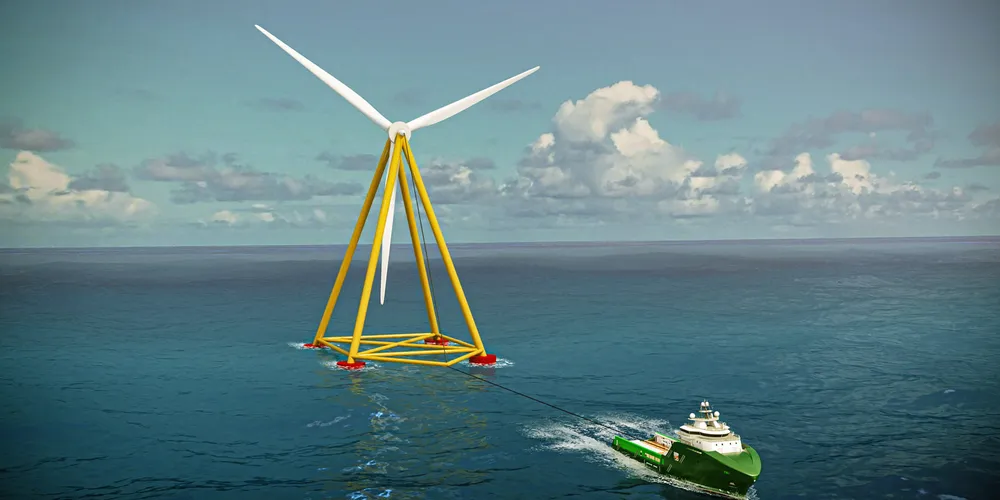Startup T-Omega launches first largescale lighter, cheaper floating prototype

Floating wind innovator T-Omega Wind (TOW) launched its first large-scale prototype in waters off New Bedford, Massachusetts on its drive to offer the sector lighter and cheaper technology.
“Our team is thrilled to take this next step in launching our groundbreaking technology,” said TOW CEO Brita Formato.
“Our technology presents significant cost reductions in both production and installation/maintenance, entirely manufactured domestically. We are excited to showcase this technology to the world’s largest offshore wind developers, and we aim for full utility scale deployments in the coming years,” Formato added.
TOW's technology is engineered to use a standard horizontal-axis rotor and generator fitted to the apex of a floating four-legged steel platform anchored to the seabed via a single mooring line.
The design allows it to float on top of waves rather than fight them, allowing it to come in much lighter than platforms based on existing offshore oil & gas technologies.
T-Omega calculates a levelised cost of energy (LCOE) for a full-size TOW unit of less than $50/MWh, far lower than US National Renewable Energy Laboratory (NREL)’s $200/MWh estimates.
Two-thirds of the nation’s offshore wind resources are in waters deeper than 60 metres by NREL estimates, requiring floating platforms.
President Joe Biden's administration aims to spark 15GW of development by 2035 through its Floating Wind Shot launched last year while driving down costs by 70%.
Federal offshore energy regulator Bureau of Ocean Energy Management kickstarted commercial development last year with the auction of five leases in deep waters off California holding some 7GW and has started processing sector activities off Oregon and in the Gulf of Maine.
Optimism around floating wind has driven a global pipeline of 350GW but Danish research consultancy Aegir Insights warned “this is very much that, a ‘pipeline’”.
The technology remains far costlier than fixed bottom and has little industrial scale, with commercial deployment totaling only 250MW in three small arrays in Europe.